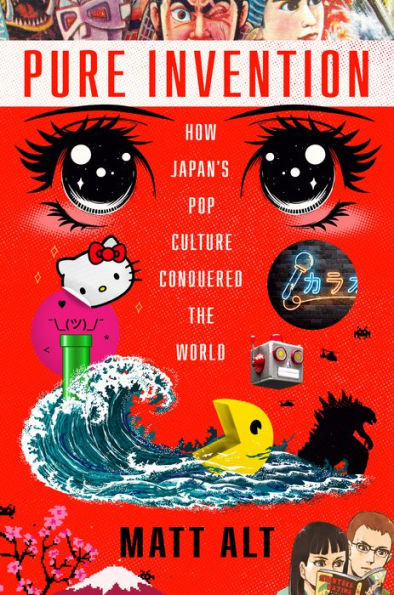JQ Magazine: Book Review — ‘Pure Invention’

By Rashaad Jorden (Yamagata–ken, 2008-10; Kochi-ken, 2018-2020) for JQ magazine. A former head of JETAA Philadelphia’s Sub–Chapter, Rashaad is a graduate of Leeds Beckett University with a master’s degree in responsible tourism management. For more on his life abroad and enthusiasm for taiko drumming, visit his blog at www.gettingpounded.wordpress.com.
Nintendo, karaoke, Miyazaki, manga, Pokémon. Those names resonate with so many people all over the world as Japanese pop culture, which has become a significant tool in promoting the country. After all, many people feel like they know Japan through what they’ve seen on TV, in the movies, etc. They can also enrich and add joy to our lives.
But how did Japanese pop culture become such a dominant force across the globe? Tokyo-based writer, translator and reporter Matt Alt answers that question and more in Pure Invention: How Japan’s Pop Culture Conquered the World by illuminating brands and names that have seemingly made Japan an epicenter of coolness.
Of course, seemingly everything in Japan has a long history, so why would various forms of pop culture be any different? Unsurprisingly, chapter one of Pure Invention is devoted to the very first manufactured item to emerge from the ashes of World War II, which was a toy jeep. It’s fascinating to read about the backstory of the toy’s creator (Matsuzo Kosuge) and creation, as “jeep” was one of the first English words that Japanese kids mastered in the postwar years. Despite this influence, it is the story of a product that, in Alt’s words, was largely forgotten.
Fortunately, Pure Invention highlights products better known to those outside of Japan. Obviously, any comprehensive work about anime could include the contributions of hundreds; Alt chooses to focus on Osamu Tezuka, the brain behind Mighty Atom (more popularly known as Astro Boy in the West). Tezuka is an appropriate figure to highlight as the author writes, “It is impossible to imagine anime or manga existing in the form it does without Tezuka.” Indeed, the paragraph in which Alt illustrates the significance of Mighty Atom to Japanese culture is a highlight (In fact, the very word “anime” was coined by Tezuka).
After reading the first couple of chapters, Pure Invention gives the impression that it’s a collection of biographies—if not short stories devoted to a different topic, although there is a connection between several of the chapters. While Alt seems to stray from the main points of each chapter at times, the book has no shortage of information into how various forms of culture grew, such as the origin of kawaii while writing about Hello Kitty (or at least, how the word became an en vogue term to describe a culture of cuteness). But from the beginning, you get the feeling that Pure Invention is largely the story of the creators instead of the creations.
That changes in the second half of the book, where Alt offers a heavier emphasis on the pop culture art forms that are most likely to have provided excitement in your life, such as Pokémon, Pac Man and Studio Ghibli. As Pure Invention progresses, you get more of a sense of why certain products took off outside of Japan (including how Nintendo astutely promoted Pokémon). While the book features intriguing background information about some relatively recent key figures in the growth of Japanese pop culture (such as Pokémon creator Satoshi Tajiri and Shigeru Miyamoto, the mind behind Donkey Kong and Super Mario Bros.), the latter half is more gripping due to the sharper focus on the popularity and success of the products highlighted in Pure Invention.
For more information on Pure Invention, click here.
For more JQ magazine book reviews, click here.


Comments are closed.